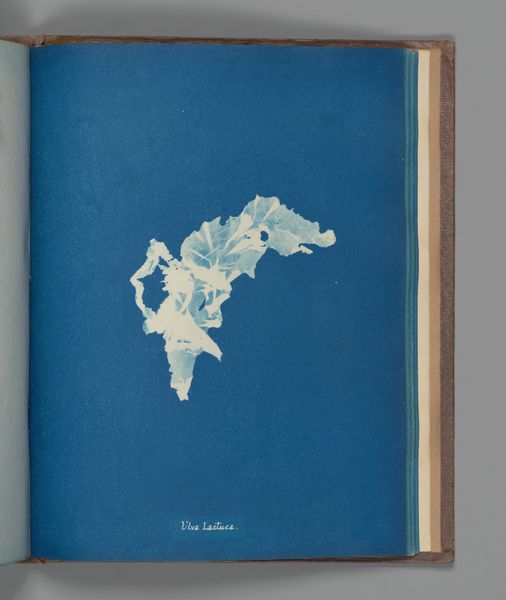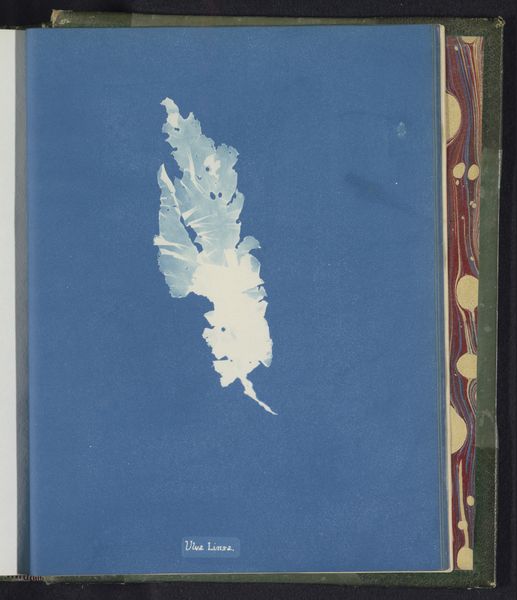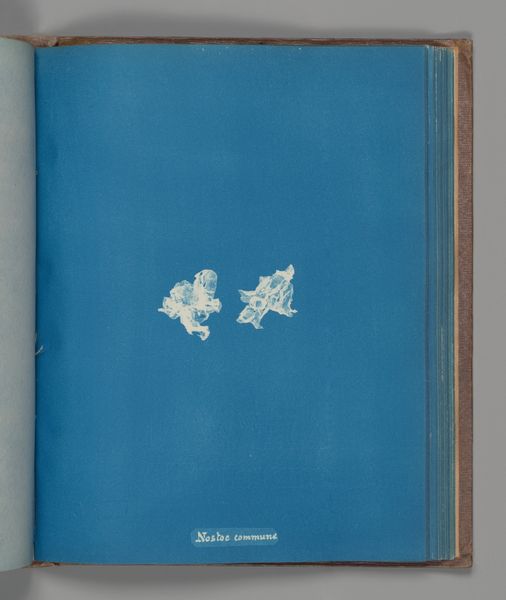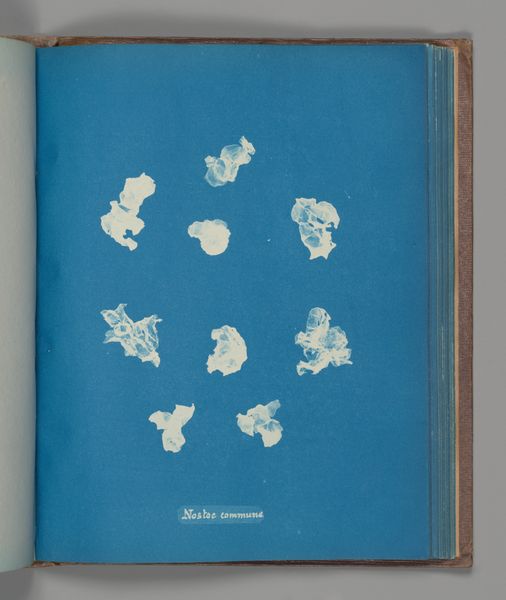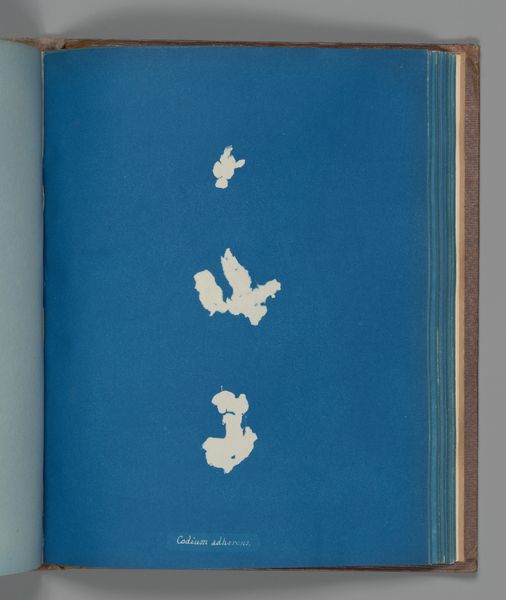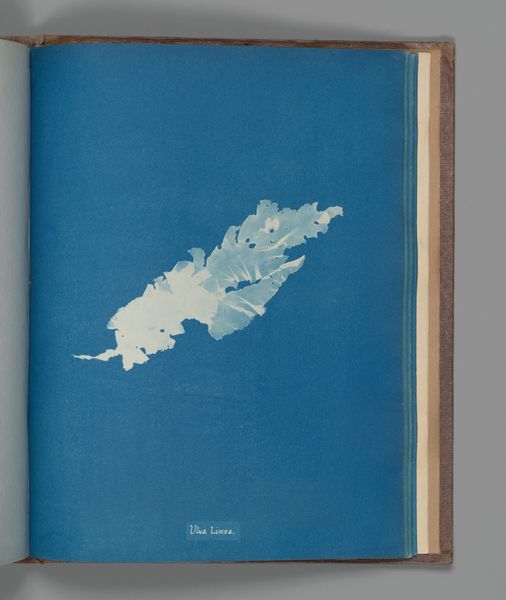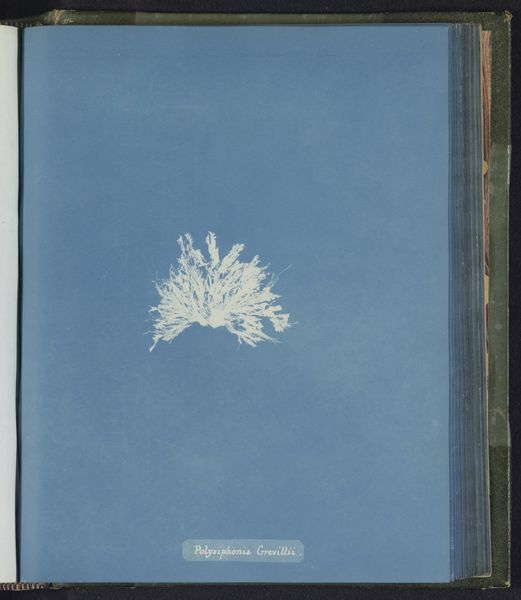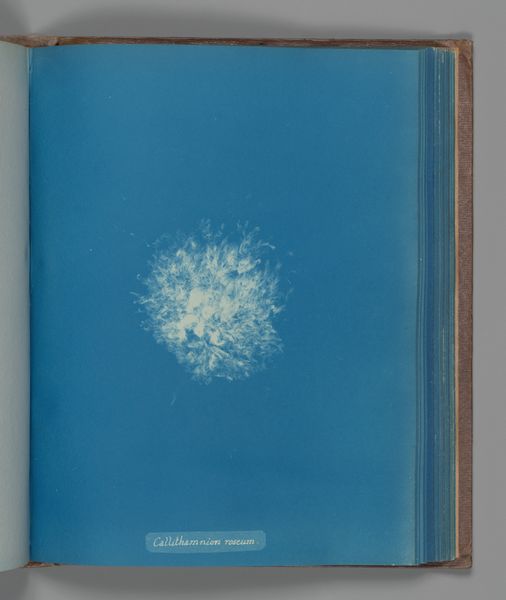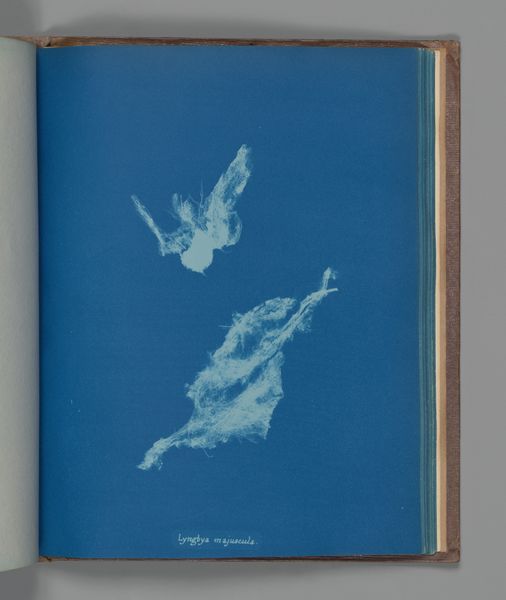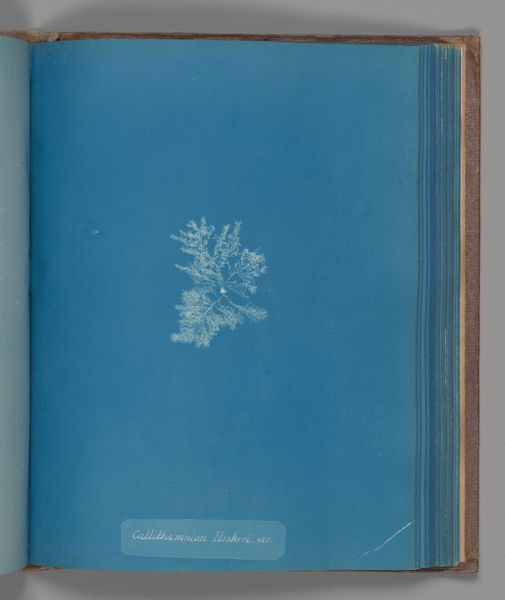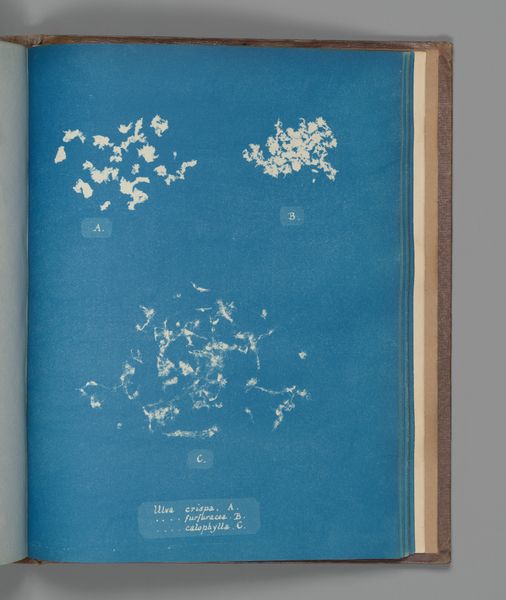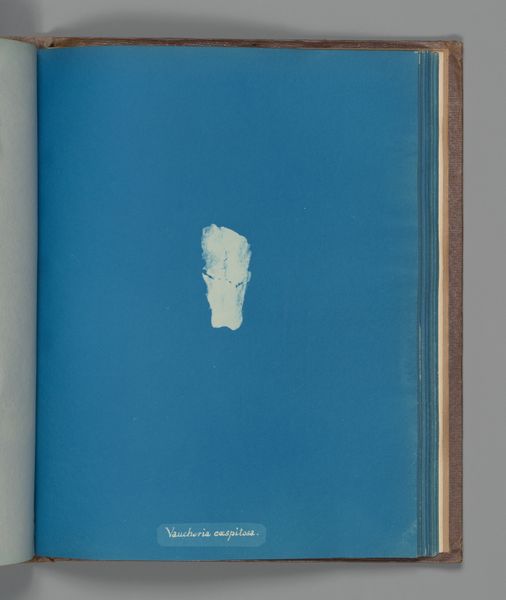
print, paper, cyanotype, photography
#
still-life-photography
# print
#
paper
#
cyanotype
#
photography
#
naturalism
Dimensions: Image: 25.3 x 20 cm (9 15/16 x 7 7/8 in.)
Copyright: Public Domain
Curator: Welcome. Today, we're observing "Zygnema curvatum" created between 1851 and 1855 by Anna Atkins. This particular print employs the cyanotype process, a very early photographic technique, rendering the subject on paper in stark blues and whites. Editor: The immediate impact is one of ghostly fragility. The white subject against the deep blue evokes something like an ethereal cloud, a wisp caught in an otherworldly sky. It feels delicate, almost ephemeral. Curator: Precisely. Atkins' approach beautifully marries scientific documentation with aesthetic expression. She was cataloging algae, and the cyanotype was a method of directly recording their forms. But it goes beyond simple representation; there’s an undeniable artistic sensibility in how she composes the image. Editor: Absolutely. The use of cyanotype adds to the sense of scientific rigor, like a blueprint. I think the almost monochromatic palette emphasizes the structural complexities of the algae itself, turning it into an intricate, abstract pattern. The form is allowed to dominate. Curator: This speaks volumes about the status of women in science at the time. Photography allowed a new mode of botanical illustration that offered an avenue for scientific engagement outside traditional academic routes. She was part of a network of botanists, and these prints were circulated amongst them as a more immediate form of illustrated catalogue. Editor: So, beyond the aesthetic qualities, these were documents intended for an informed public, a specific community engaged in natural history? How interesting that what we now consider art was born of such a practical purpose. I still return to that feeling of something dissolving when viewing it, maybe suggesting nature’s inherent flux and change, despite this effort to capture it definitively. Curator: An excellent point, because the print itself is stable, but reminds us that even then that capturing process had limitations, especially when representing organic and inherently unfixed natural elements. Editor: It’s fascinating how a single image can be both a precise record and such a powerfully suggestive work of art. Thanks for sharing insights with me on the importance of appreciating both. Curator: A perfect culmination. I was also captivated and now even more by your commentary.
Comments
No comments
Be the first to comment and join the conversation on the ultimate creative platform.
